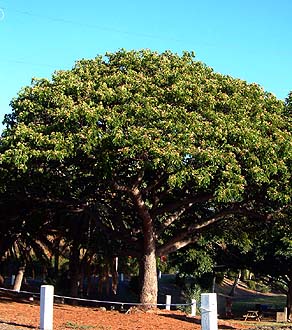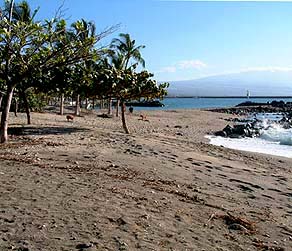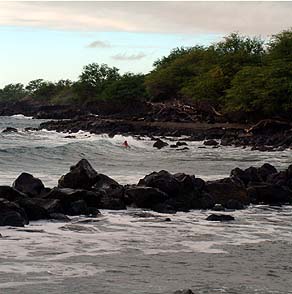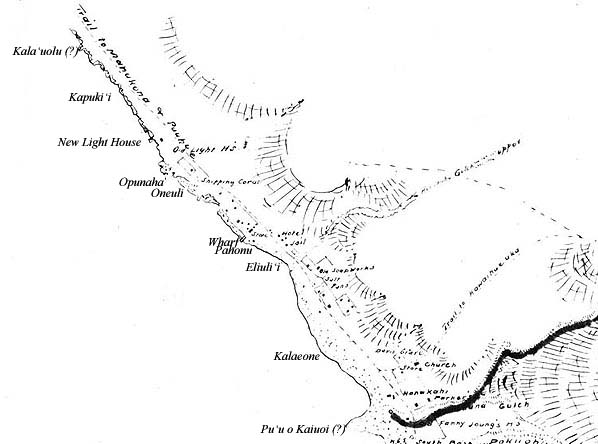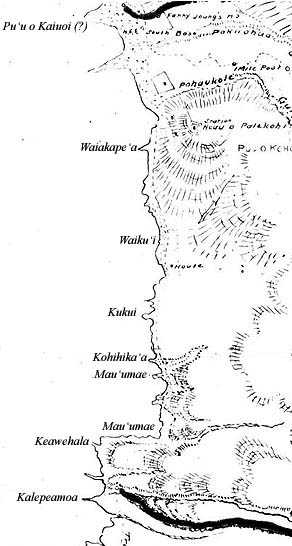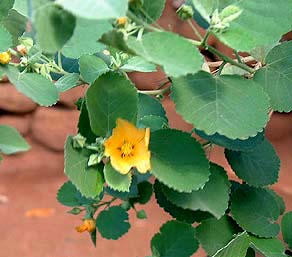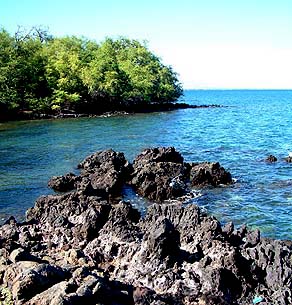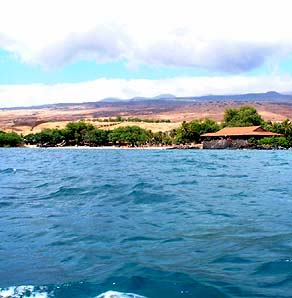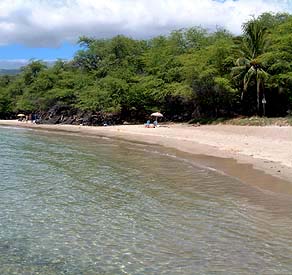 |
 |
 |
|||||
|
|
|||||||
| |
|
|
|
|
“If no one told you, you wouldn’t know there was a natural beach there,” Jeannine remarks. “It was a crescent-shaped, white-sand beach, and from as far back as I could remember, there was a boat that was marooned right in the bay. It was like a couple hundred yards off of the shore. "And the thing about the bay was, there was like the shore and then there was a little dip in the bottom of the ocean and there was like a sand bar. So the boat was marooned on the Sand Bar. I remember it was ‘Mr. Christiansen’s boat.’ Everybody would say, ‘Let’s go out to Mr. Christiansen’s boat,’ so we’d all jump in the water and swim out to the boat. We’d climb onto the boat and we would dive or do bombs off of that boat. It was a fun time."
|
||
|
|
||
“Living on the beach, oh, it was beautiful,” Lala agrees. “Where Chock Store was, used to be all beaches. All beach. No body bothered you except for the cattle coming through twice a week. They come right through that road. I used to run the sand beach. It’s about a mile I think, from there all the way to Pelekane. “It was a beautiful beach, right to the heiau. We could see the heiau, because we’d pass along side with the boat. We had entrances, one coming in from the right, right next to the pier, where the post office was—the cattle pier. Kind of close, but not that wide. Then when they get in here, they get wide. The beach and the sand. The sand goes way out then comes up, reef. I don’t care if you get big waves, like Kona storms, it doesn’t come in. It breaks way out there."
|
|
|
“It used to be just sandy beach,” ‘Ilima says, “and this is where we lived. And I remember in the morning my mom would mix the poi and cook the rice and then she’d go crabbing so we would have crab for breakfast. Steamed crabs. And my Dad would throw net and we’d have fish Those were wonderful times.” “I don’t know how long the beach was,” Jeannine muses. “When you’re little it seems like it goes on forever. But I remember walking along the sand with my older cousins, and when someone would catch aku, they would give our family aku, my cousins would go to the far end of the beach, in a grove, like maybe a kiawe tree grove, and they would like to make an imu thing and they would bake the fish. And everybody would wait for the fish to be cooked.”
|
“We’d go there for lunch or a picnic on the far end of the harbor, past the canoe club. If you go across that, like there are some rocks right there, if you go across that, there is a nice beach, but it’s a black sand beach. There is a nice grassy area and some kiawe trees growing, but we wouldn’t go swimming. That is a black sand beach, and our parents always warned us never to go swimming at black sand beaches, because of the undertow. “But we’d go there sometimes just to go wading, not to swim, but when we were teenagers we used to go swimming there. And we’d go body surfing, or go boogie boarding. And I remember one time I caught a wave and it just flipped me right over and I landed right on my head and it almost knocked me out. "But sometimes we go there and we just sit and have a sandwich or something like that. The water was much cleaner then. It wasn’t anything like now. It was really clean. We just called that beach ‘the Harbor,’ ‘O.K. where are you kids going?’ ‘we’re going to the Harbor’.”
|
|
| |
|
|
Of Kawaihae it is said: “A murmuring sea, a noisy speaking sea, a grumbling sea, a sea which loudly voices life and death.” (Desha 2000: 311). “Kai hawanawana,” Papa Akau ponders. “Actually, you know, when late in night or early in the morning, when it’s so quiet, you see the small little waves washing on the shore line. That’s what it is. But you don’t have it now. Because of the Harbor. That is kai hawanawana. So the Kawaihae Canoe Club has one canoe named 'Kai Hawanawana'.”
|
||
| |
||
“They say the mountain side used to be loaded with the ‘ilima” says Papa. “And you still see it now. Nice and orange. Pua ka ‘Ilima, Kukui, Ka‘ewa. Ka‘ewa is up, right by the lighthouse. That heavy one. Comes right where the breakwater starts going over. Pua ka ‘Ilima starts outside, whirls until it gets out in front of the heiau, then the wave goes straight. That’s Kukui. Kukui is a place on the inside. Then you get various areas with names, so it goes after that. "But see, all the three waves out here and the shore line, you hear people talk. Because when they hear what kind of surf’s happening, they quick know which place. Ka‘ewa is a heavy, rough, pounding. Pua ka ‘Ilima is a nice soft. And Kukui is a nice long, starts from way out. That’s where Kamehameha surfed. Kukui. They surfed at night time. So this is the story.” “Pua is the flower, ka ‘ilima is the plant there. So, they named that after that, when you start one end, the waves, you see it’s the wave that moves on. Ka‘ewa, Pua ka ‘Ilima, Kukui, see this is the area where the name picks up." “Every year, just around October to December, you would have these sets of waves that would come in” ‘Ilima remarks. “And these waves were called Pua ka ‘Ilima. So my Mom named me 'Pua ka ‘Ilima.' I got my Hawaiian name from those breakers, the set of breakers that come in during the end of the year."
|
|
|
“I believe at the time, during that time of the year,” Papa states,“the wild ‘Ilima flower used to be in full bloom so I think that they named that because the flowers were in full bloom. But actually, I’m not named after the flower, I’m named after the waves, but the flowers had something to do with it. “Why they give the name is something that took place there. So they always remember. ‘Oh, when the fish start pounding this, oh,’ they say ‘Ka‘ewa is getting mad’ because heavy surf. And when you look at Pua ka ‘Ilima, it’s nice and soft there. So all of that, because they have a story in back of that. The ones who know the story, fine; the ones who don’t know, they guess. Everything has name, and why they gave that name. And we don’t use it, so we forget.”
|
"Waiakapea is just below the heiau. That’s the spring water. Waiakapea. It’s still there. "Waiku‘i means 'the water bangs together.' Ku‘i is 'to hit.' So it’s where fresh water and salt water used to mix together; that’s what ku‘i means. That’s down at Spencer Park, right next to the pavilion, on the Kona side. That little bay. "There’s a Kukui over there, right next, there’s a kahawai that comes there, Kukui is on the Kohala side and the kahawai is supposed to have a name too, but I can not tell you right now."
|
|
|
|
|
|
Samuel M. Spencer Park is the home to what is now commonly called "Spencer Beach," though the sign at the entrance proclaims it "‘Ohai ‘Ula Beach." Papa says, "‘Ohai is the monkey pod tree.‘Ula means red. It's the red flower. They're still growing." “White Sand,” Jeannine says. “From as far back as I could remember, that’s what everyone called it, ‘White Sand’: ‘Where are you going?’ ‘We’re going to go to White Sand.’ Because the sand was so pristine, clean, white. In fact I remember as a little girl going there, I would squint, because the sun shining down and the sand would be so white. Of course it’s not so white any more.”
|
||
|
|
||
“Eddie La‘au them was staying over," Mel recalls, "he was the park keeper for Spencer Beach Park. That was not Spencer Beach at that time, it was called 'White Sand Beach.' That’s how the older guys know it. There was the elder La‘au, but us guys were all small. Us guys were the only young group, so weekends or holidays, we used to get all the girls from Waimea, Honoka‘a, they all used to come weekends on the beach. So all the boys used to go down the beach to meet new friends. "For me, I was restricted from going out at night. I would wait ‘till Grandpa went to sleep. He would play on his ukulele and fall asleep, and then I would jump out the bedroom window, because all the doors would squeak. My friends would wait for me and then we would all go to White Sand beach. Meet friends there, play music, sing, etc. And then try to get home before Grandpa got up. One time I we all overslept at White Sand. I rushed home and Grandpa was in the yard watering his plants. I was caught! I told Grandpa I was sorry and that I would not do that again."
|
|
|
“I used to go Spencer Park and swim, dive from the roof," Lala says. "Now I look at it, and oh, ‘I did that?’ The park used to be different before. The road just came from this end, just past the heiau, below. That’s where we used to go hang out all the time, the big old pavilion. I used to live there too, where the mango tree was. We lived there for 3 years. “Surfing was at Spencer, on the left side of Spencer. In the deep though, pretty deep. There’s a channel there coming in, it’s the only place we can come in with the boat. You know the small pavilion on this side? You got a channel coming in there. That’s how we used to come in. The channel’s big, but when you get in there you have to hang close to the rocks. I’d say it’s about 12 feet deep. Enough for a 50-foot boat to come in. The follow the channel about a quarter a mile, then it widens up. And the surf here is just wide. It’s beautiful. Lot of fish—bait, nehu."
|
“We used to go to camp at Spencer,” Lani says. “I would take my children and stay down there to go camping and swimming for a whole week, during the summer. Now there is a park, people can go play down the park. We didn’t have the park then. It was called 'White Sand Beach,' but there was not a park where you could go and stay overnight, or whatever. You could stay over night and you could get permit to stay. “Lots of people camped, not only me, lots of people. And they would watch me cooking on the wooden stove, and they’d say, ‘how do you learn how to do this?’ I said, ‘from my parents, they used to camp here all the time.’ And they wanted to learn how, what I was cooking on the stove, and stuff like that. And most of the time it’s beef stew, it’s easy to cook on a stove like that. And sometimes we’d hook little fish, small fish, and we would fry that too."
|
|
| |
|
“On the beach, we used to catch crabs and catch alualu. Of course we’d swim every day. When we were kids, we swam every day. We had a good life.”
|
||
|
|
||
|
|
|
|
|
|

|
| Kawaihae Home | Map Library | Site Map | Hawaiian Islands Home | Pacific Worlds Home |
|
|
|
|
|
|
|||
| Copyright 2006 Pacific Worlds & Associates • Usage Policy • Webmaster |
|||

